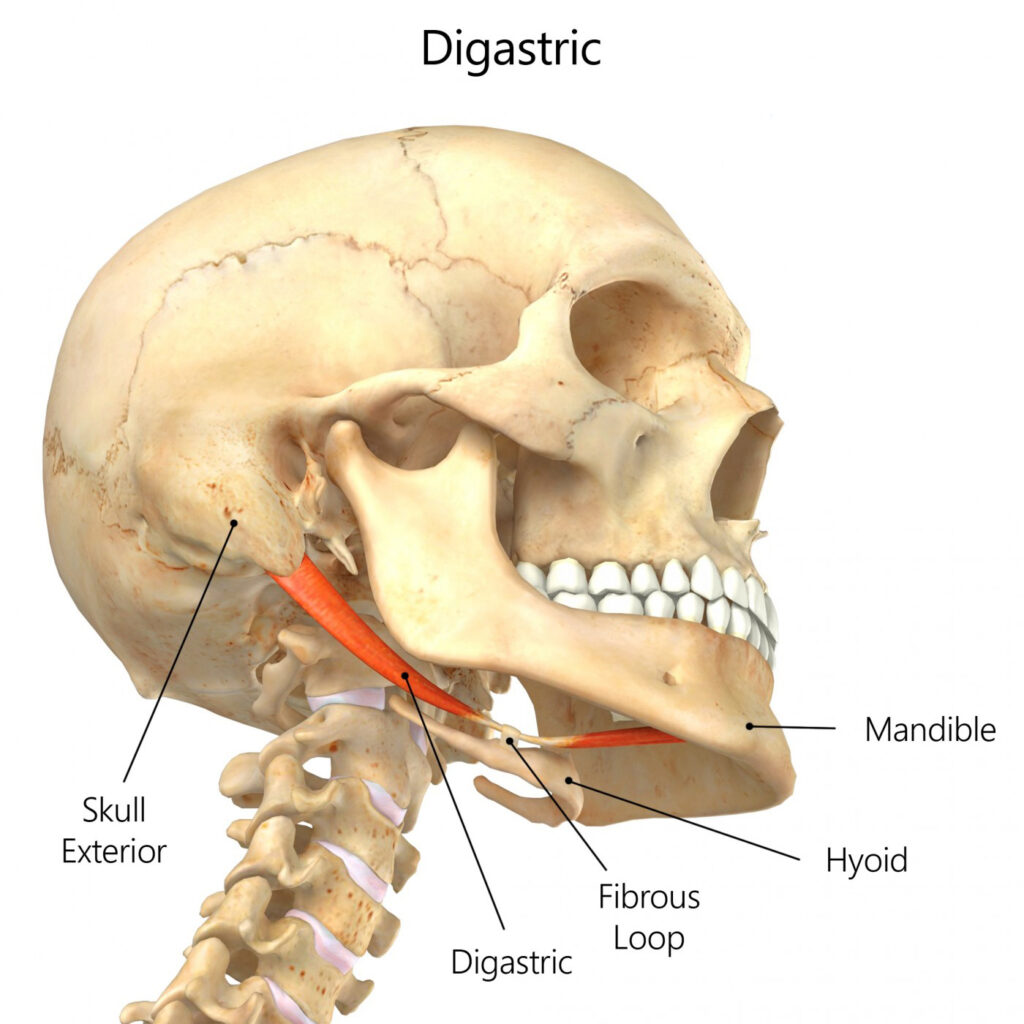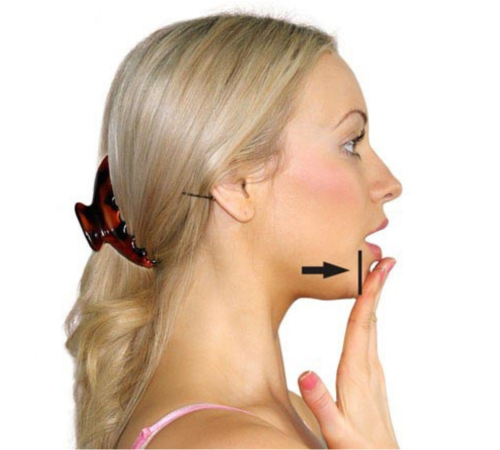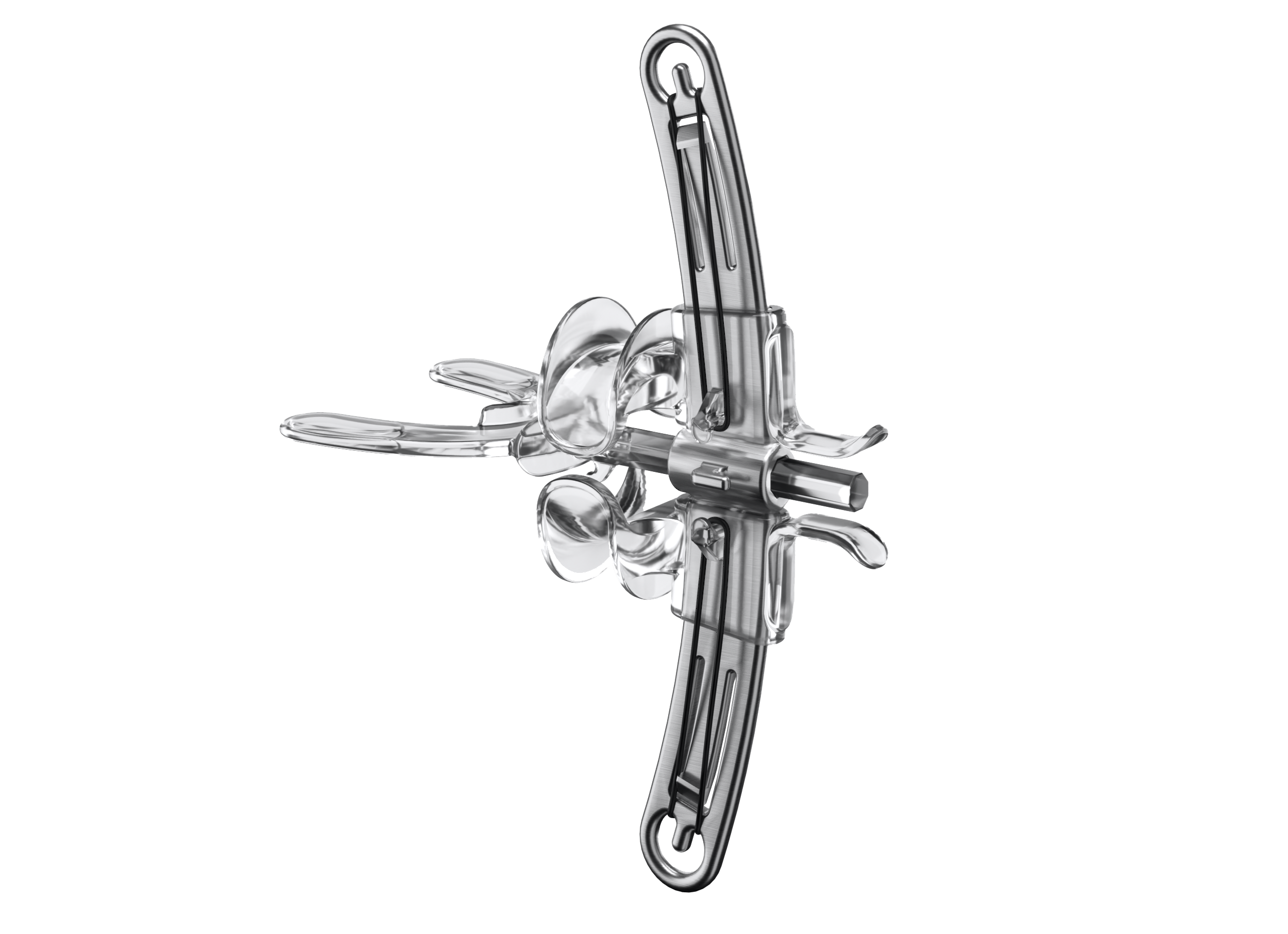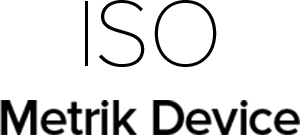ISO Metrik Face Education
Contact Us
Call Us
+1 (678) 632-3745
TESTMONIALS
ISO Metrik offers a game-changing, non-invasive solution to facial sagging — a safer, easier, and more affordable alternative to Botox and surgery. Its potential to support stroke patients with facial weakness makes it an exciting potential addition to modern stroke. rehabilitation.
Dr. Will Humphries
MAKE AN APPOINTMENT
Digastric muscle
Posted on 30th Jul 2020 / Published in: Face
General information
The digastric muscle or digastricus is one of six key muscles which assist in the movement of the human jaw. The digastric muscle helps to open the mouth by lowering the mandible.
Literal meaning
The muscle with two bellies.
Interesting information
The digastric muscle, also referred to as the digastricus, is a small muscle situated under the jaw. The primary function of this muscle is to elevate the hyoid bone – a small, horseshoe shaped bone located between the thyroid cartilage and chin. By elevating the hyoid bone, the digastric muscle depresses or lowers the mandible, helping to open the mouth and also assisting in swallowing.
The name “disgastric” is indicative of the muscle’s double-bellied structure, though other muscles in the human body also possess two or more structural bellies. The anterior belly, being the smaller of the two structures, is located on the lower border of the mandible. The larger posterior belly is located on the inferior surface of the skull, on the medial surface of the mastoid process on the temporal bone. The two bellies are joined by an intermediate tendon.
Locating your digastric muscle can be tricky, but you may be able to feel the anterior belly contract by placing your finger under your chin and trying to open your mouth against your finger’s gentle resistance. At the same time, place another finger on the mastoid process – the large, round bony bump behind your earlobe. The contractions you feel in both areas are the anterior and posterior bellies of the digastric muscle.
Pain or discomfort in the digastric muscle may be related to muscle tears and sprains or injuries due to overuse. Some conditions which may affect the digastric muscle include myopathy, atrophy, infectious myositis, lacerations, contusions or neuromuscular diseases. Temporomandibular joint disorder (TMJ) is a general term used to describe acute or chronic pain in the jaw or surrounding face muscles, typically caused by muscle overuse or repetitive jaw-clenching and teeth grinding. Treatment for conditions of the digastric muscle typically entails pain-relief medications or muscle repair surgery. TMJ cases may require oral splints or dental surgery to minimize impact on the digastric muscle caused by the teeth.
Origin
Mastoid notch of the temporal bone.
Insertion
Digastric fossa of the mandible.
Function
Mandible depression, elevation and posterior pulling of the hyoid bone which helps to open the mouth.
Nerve supply
Anterior belly: trigeminal nerve (cranial nerve V).
Posterior belly: facial nerve (cranial nerve VII).
Blood supply
Anterior belly: submental branch of the facial artery, mylohyoid branch of the inferior alveolar artery.
Posterior belly: occipital artery.

Relevant research
Numerous structural variations have been observed in the digastric muscle. One study on the anatomical variations of the anterior belly of the digastric muscle has determined the differences to be primarily in shape and location of muscle attachment. Other studies show the presence of additional anterior bellies within the digastric muscle.
Liquidato, Bianca Maria, Mirna Duarte Barros, Adriana Leal Alves, and Celina Siqueira Barbosa Pereira. “Anatomical Study Of The Digastric Muscle: Variations In The Anterior Belly.” International Journal of Morphology 25.4 (2007): Print.
Sargon, MF, and Çelik, HH. “An Abnormal Digastric Muscle With Three Bellies.” Surgical and Radiologic Anatomy 16.2 (1994): 215-216. Print.
Digastric exercises
Here is a simple exercise which may help to relieve tension in the digastric muscle. Jutting your chin forward and tilting your head slightly upwards, place the tips of both thumbs under your chin, one in front of the other. Next, place the tip of your tongue against the roof of your mouth, gradually increasing the pressure of your tongue while holding your thumbs firmly against the muscle. Hold for ten seconds and repeat three times.
Another exercise is the resisted digastric jaw protrusion exercise. Push the bottom of your jaw forwards, using resistance from your hand. This is a strengthening exercise for the jaw muscles, including the digastric muscle. Perform ten repetitions, three times per day.


Digastric Muscle: The Hidden Key to Jaw Support and Neck Contour
The digastric muscle is a two-part muscle located beneath the jaw, connecting the mandible to the hyoid bone. It plays a central role in jaw movement, swallowing, speech, and maintaining a defined jawline and neck profile. While not visible on the surface, the digastric muscle directly influences the shape and function of the lower face and submental region (under the chin).
Anatomy & Function
- Origin:
- Anterior belly: Digastric fossa of the mandible
- Posterior belly: Mastoid notch of the temporal bone
- Insertion: Intermediate tendon attached to the hyoid bone
- Function:
- Depresses the mandible (opens the jaw)
- Elevates the hyoid bone during swallowing and speaking
- Supports the floor of the mouth and neck contour
- Nerve Supply:
- Anterior belly: Mylohyoid nerve (branch of mandibular division of CN V)
- Posterior belly: Facial nerve (CN VII)
The Problem: Mandibular Weakness & Neck Sagging
As we age or lose mandibular support, the digastric muscle weakens or becomes overactive in an attempt to compensate. This leads to:
- Loss of jawline definition
- Formation of a double chin or submental fullness
- Difficulty with proper jaw opening and stabilization
- A fatigued or sagging appearance in the lower face and neck
In addition, chronic tension in this area can contribute to TMJ dysfunction, jaw discomfort, and altered oral posture.
The ISO Metrik Device: Indirect Support for the Digastric Muscle
Though the digastric muscle is not directly targeted by the ISO Metrik Device, the device strengthens its supporting structure—namely the mandible, teeth, and lower facial muscles that stabilize jaw motion and tone.
How the Device Helps:
- Stabilizes the mandible through controlled bite engagement, promoting proper positioning during use
- Strengthens muscles that coordinate with the digastric, like the masseter, orbicularis oris, and buccinator
- Promotes vertical support of the lower face, relieving strain on deep muscles like the digastric
- Helps improve lower facial symmetry and jawline projection, reducing the visual burden on the submental region
By reconditioning the muscle network above the digastric, the ISO Metrik Device allows it to function without compensation, improving jaw comfort, facial balance, and neck contour over time.
Why the Digastric Muscle Matters
Your jawline, neck, and lower face are all shaped in part by what lies beneath—and the digastric muscle is a foundational player in that system. When it’s functioning in balance, the lower face looks defined, toned, and youthful.
The ISO Metrik Device enhances this harmony by strengthening the muscle layers above and around the digastric, restoring equilibrium from the inside out.
Want a sharper jawline, better oral posture, and reduced lower face sagging?
Train the muscles that support the digastric—with the ISO Metrik Device.
TESTMONIALS
Dimply dummy text of the deaprinting and typesetting industryorem Ipsum has been the industry’s standard dummy dearty.
DAVID SMITH
CEO,Radiustheme
Contact Us
Call Us
+1 (678) 632-3745
MAKE AN APPOINTMENT
Your journey to facial rejuvenation begins here. Join the ISO Metrik Device Community today.

